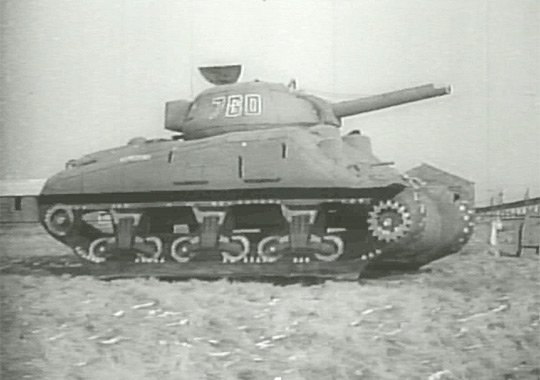
A great book called Secret Soldiers: How a Troupe of American Artists, Designers, and Sonic Wizards Won World War II’s Battle of Deception Against the Germans is about…well, just that. It covers the U.S. Army’s 23rd Special Troops and how they waged surreptitious “battles” against the Germans using deceptive techniques.
These techniques were sometimes as simple and time-tested as camouflage. Other techniques involved creating the impression of battles with carefully orchestrated sound effects.
But one thing always stands out: those inflatable rubber tanks. As the book puts it:
In pitch dark, often in rain or snow, they would inflate each dummy as close to the desired position as they could, use muscle power to finish the setup, stake it down against wind, and them camouflage it. There was an art to making a fake tank appear to be a real, hidden tank–especially in the dark, when it was impossible to stand back and eyeball the setup to determine if it looked real and also remained just visible enough to be spotted by an alert enemy.
It was a delicate business, because they could not camouflage the tank too well. Yet if the tank were too visible, it would arouse the suspicions of the Germans. So they would try to simulate some of the errors that real tankers might commit in the field:
- Leaving some of the barrel sticking out.
- Leaving a gas can exposed.
- Draping the net loosely to show the shape of the tank underneath.
Of course, the ironic and very surreal thing was that these rubber inflatable tanks were so at odds with everything else going on:
What are we really seeing, and why is it there? What could be more absurd than an inflated rubber object on a battlefield? The camoufleurs called them “balloons” or even “rubber ducks.” recogining the joke. The inflated tanks were toys, more suitable for a child’s playground than a killing zone.